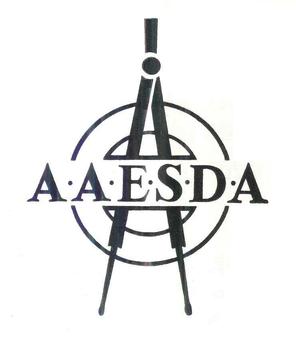
The Australian Manufacturing Workers Union (AMWU), officially registered as the Automotive, Food, Metals, Engineering, Printing, and Kindred Industries Union, is an Australian trade union. The AMWU represents a broad range of workers in the manufacturing and industrial sectors, and is affiliated with the Australian Council of Trade Unions as well as the Australian Labor Party.

The Australian Services Union is a trade union representing workers in a variety of industries.

United Voice was an Australian trade union from 1992 to 2019. It merged with the National Union of Workers to form the United Workers Union in 2019. United Voice was part of the Labor Left faction of the Australian Labor Party.

Arthur Thomas Gietzelt, AO was an Australian politician and minister.
Federated Marine Stewards and Pantrymen's Association of Australasia was an Australian trade union established in 1884, and existing as a federal union from 1909 to 1988. The association represented marine stewards and stewardesses, marine pantrymen and crew attendants. The union operated a closed shop, with all workers employed in the industry members of the union, and operated on a 'no OK card - no job' principle.
Manufacturing Grocers' Employees' Federation of Australia (M.G.U.) was an Australian trade union existing between 1906 and 1988. The union was first established as the Federated Candle, Soap, Soda & Starch Employees' Union of Australia, before changing its name in 1914. The union represented workers employed in manufacturing grocers' sundries and non-edible grocery products, particularly in the southern states of South Australia and Victoria. In 1988 the union amalgamated with the Federated Millers and Mill Employees' Union to form the Federated Millers and Manufacturing Grocers Employees' Association of Australia, which in turn merged with a number of unions to form the National Union of Workers.
The Federated Cold Storage and Meat Preserving Employees' Union (FCSMPEU) was an Australian trade union which existed between 1908 and 1992. The union represented workers employed in refrigeration, and the production of ice, dairy products, preserved meat, fish, game and poultry in the southern states of Victoria, Tasmania and South Australia. The union was initially known as the Cold Storage Union of Victoria before changing its name in 1915. The union maintained 100 per cent membership, and most workplaces were closed shops.
The Federated Rubber and Allied Workers' Union of Australia was an Australian trade union which existed between 1909 and 1988. The union represented workers employed in manufacturing rubber, plastic, electrical cable, adhesive and abrasive products in Australia.
The Australian Textile Workers' Union (ATWU) was an Australian trade union which existed from 1919 to 1987. The ATWU represented Australian workers employed in the manufacture of textiles, including the spinning, weaving, dyeing and finishing of all types of fibres. Later, the union also represented workers employed in manufacturing felt hatting.
The Clothing and Allied Trades Union of Australia (CATU) was an Australian trade union which existed between 1907 and 1992. The CATU represented workers employed in the manufacture of clothing and manchester goods, including pressers, cutters and machinists. Approximately 85 percent of the union's membership was female.
The Federated Liquor and Allied Industries Employees' Union of Australia (FLAIEU) was an Australian trade union from 1910 to 1992. It represented workers employed in hospitality, catering, breweries and alcohol retailing. The union merged with the Federated Miscellaneous Workers' Union of Australia to form United Voice in 1992.
The Australian Leather and Allied Trades Employees' Federation (ALATEF) was an Australian trade union that existed between 1945 and 1970. It represented workers employed in the preparation of leather from hides, and the manufacture of a variety of leather and canvas goods.

Ray Gietzelt AO was a major figure in the Australian union movement in the latter part of the 20th century. He led the Federated Miscellaneous Workers' Union of Australia from 1955 to 1984. Ray Gietzelt exerted major influence in the careers of Bob Hawke, Neville Wran and Lionel Murphy, and he was made a Life Member of the Australian Labor Party.
The Printing and Kindred Industries Union (PKIU) was an Australian trade union which existed between 1966 and 1995. It represented production workers in the printing industry, including compositing, typesetting, letterpress printing, lithographic plate-making, electrotyping, stereotyping and bookbinding, and the manufacture of paper and cardboard products, such as paper bags, envelopes, cardboard boxes and cartons. Approximately half of all members were qualified tradespeople, with the remainder semi-skilled or unskilled workers.

The Association of Draughting Supervisory and Technical Employees (ADSTE), originally known as the Association of Architects, Engineers, Surveyors and Draughtsmen of Australia (AAESDA), was an Australian trade union which existed between 1915 and 1991. It represented white collar and technical-grade employees in both the private sector and the public service.

The Vehicle Builders' Employees' Federation of Australia (VBEF) was an Australian trade union which existed between 1863 and 1993. It was an industrial union which represented all production employees in the vehicle industry and automotive parts manufacturing industry.
The Federated Moulders' (Metals) Union of Australia (FMMUA) was an Australian trade union which existed between 1899 and 1983. It represented moulders – skilled tradesmen who fabricated the moulds for casting metal products in foundries. In spite of only organising within a single skilled occupation, which kept total membership low, the vital position of moulders in major industries such as mining, manufacturing and the railways, ensured that the union remained industrially powerful with a reputation for being highly militant.
The Pulp and Paper Workers Federation of Australia (PPWF) was an Australian trade union which existed between 1913 and 1991. The PPWF represented workers in the pulp and paper industry.
The Australian Postal and Telecommunications Union (APTU) was an Australian trade union which represented a wide range of employees in the postal and telecommunication industries, including postmen, postal and mail officers, delivery drivers, storemen, linesmen and telegram messengers. It was founded in 1925 and merged into the Communication Workers Union of Australia (CWU) in 1992.







